Catalogues
Keramocringe
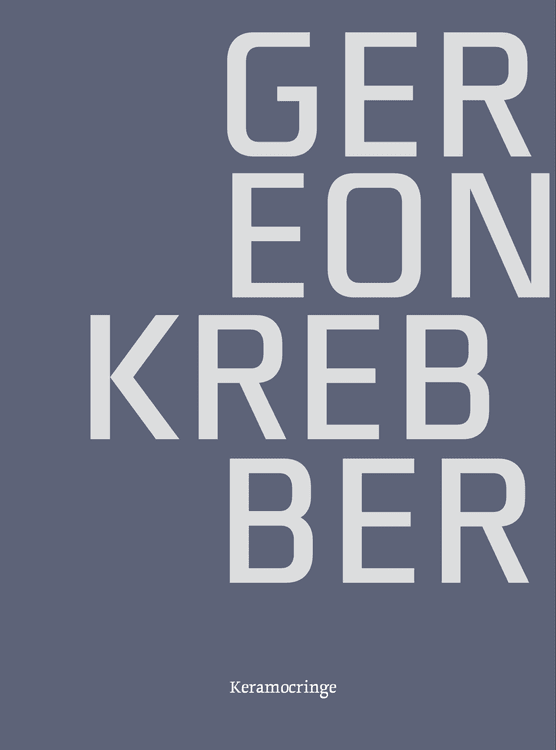
Gereon Krebber – Skulpturensammlung Viersen

Gereon Krebber – Kunstraum am Limes
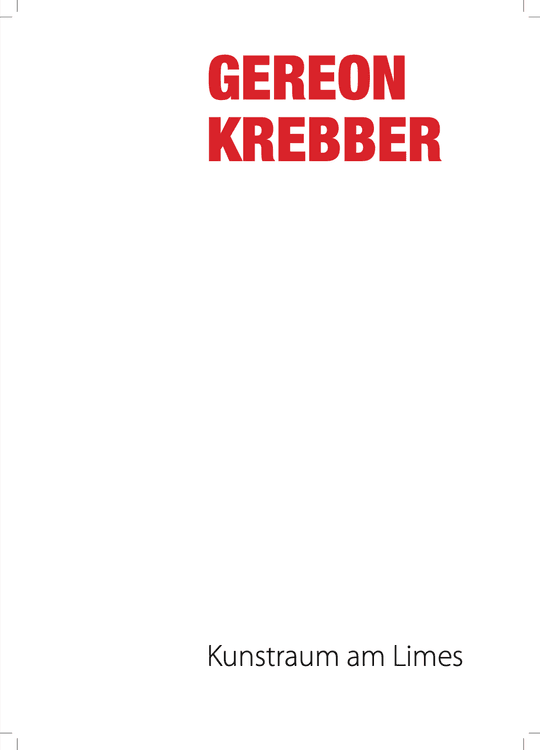
Here today, gone tomorrow

Azurkomplex
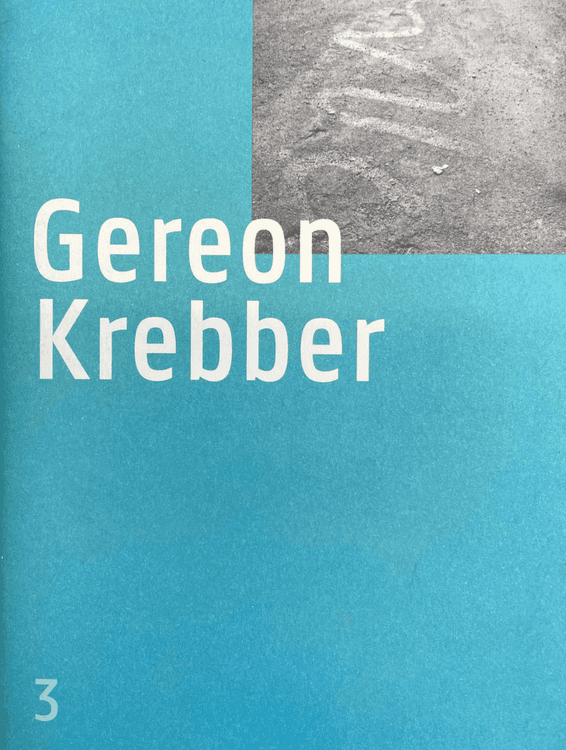
Sorrysorrysorry

All that is solid melts into air

Arbeiten nach Größe
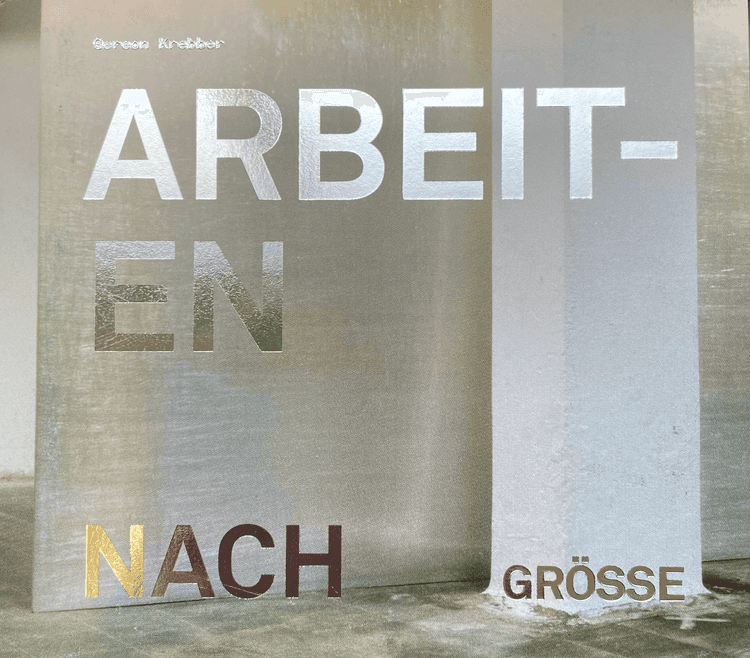
Videos
Konspirative KüchenKonzerte #26: Gereon Krebber & das Gemüseorchester
One After The Other – Sequential Micks
Interview – Lagelagelage
Interviews
Keramocringe
Keramocringe is the final exhibition in this very special place. After 40 years the Skulpturenmuseum Glaskasten Marl is closing its premises on Creiler Platz – with a show by Gereon Krebber. Since the collection was transferred to the depot last summer, the spaces beneath Marl Town Hall have been empty for the first time in years. At ground level, glassed...
Texts
Dem Pathos der Alten die Luft rauslassen – Gereon Krebbers „Myreen“
Guido Reuter (Kunstakademie Düsseldorf)
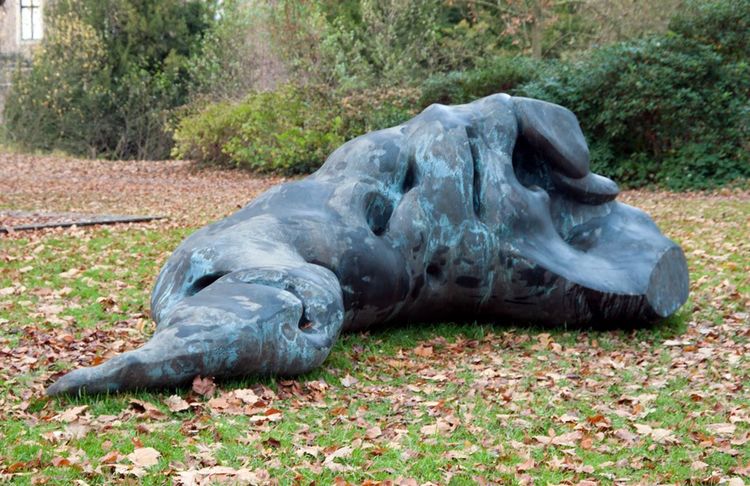
Gereon Krebbers „Myreen“ ist fantasiereich, humorvoll und verdeutlicht den Anspruch des Künstlers, traditionelle Aspekte skulpturaler Bildwerke in seine Arbeit so zu integrieren, dass sie künstlerisch zugleich gegen den Strich gebürstet werden. Dieses Vorgehen kann auf Seiten der Rezipient*innen jedoch die Wahrnehmung wie das daraus folgende Verständnis des dreidimensionalen Bildwerks erschweren – insbesondere, wenn die Betrachtenden weniger vertraut sind mit dem...
„Go and knead some clay …“
Maria Müller-Schareck

What a mixture! The list of different materials that Gereon Krebber uses for his sculptures reads like a shopping list for the hardware store, with a detour to the supermarket: adhesive tape, balloons, bitumen, cable ties, cardboard boxes, carpet, coat hangers, Coke, concrete, cord, corrugated tubing, dried meat, expanding foam, foil, gelatine, glycer ine, grout, laminated glass, mayonnaise, paints...
Sculpture’s Capacity of Shifting. Gereon Krebber
Peter Lodermeyer
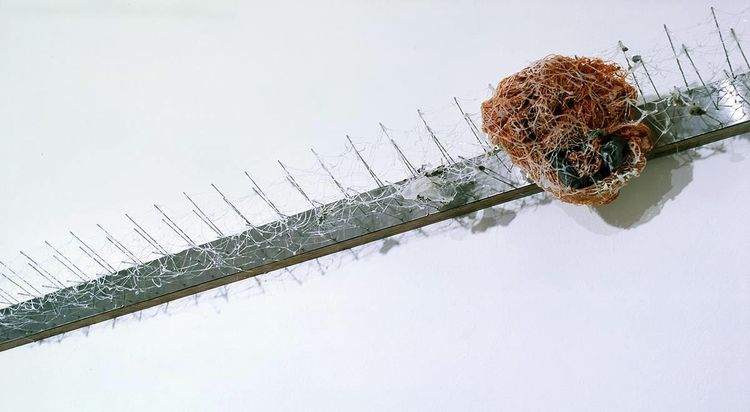
Pigeon deterrents, glue, nylon, marihuana, film, spray paint, wood. Such are the materials listed for Gereon Krebber's sculpture from 2010, "Let's talk about it later". Beyond a doubt: Krebber loves materials we would not expect in a context of art. If we were to tally up all the substances he has already used, the list would be long—and...
Frequently Asked Questions
Yes, I grew up in Bottrop, a small city in the Ruhr District. Where there used to be mines, there are now garden fences, stretch pants, and auto workshops. And the famous Quadrat, the Josef Albers Museum, the city’s cultural pride. It used to be a kind of preserve or reservation, very crucial to my early artistic education. For me, Bottrop offered the intellectual and spiritual adventure of art and perception right there, in the Stadtgarten.
Yes, even before I started art school, I drew a lot of nudes; went to the slaughterhouse and photographed mountains of flesh, mold colonies, and plastic dolls in bags. That might sound a little embarrassing, but I had a post-adolescent liking for meat, skin, and slime. Those moments in between subliminal nausea and nervous fascination were and still are very haunting. For a long time, I worked on drawing a dead mouse, for example; I kept it in the freezer and took it out again and again, so that I could draw it—until the smell became really unbearable. I also tried to paint, at first, but I can’t deal with paint. Too pictorial, too flat, not enough resistance. I can’t deal with it, but I can’t leave it alone, either. So I keep using paint in my works, as a material, as a kind of skin, which I pour on top of an object, kind of like soup, letting it flow down like a tough emulsion, or spraying it around, like fog. I still draw—I did the little floor plans for this catalogue, for instance. On the other hand, I’ve been falling behind when it comes to drawing freely. I’ve got to start doing that again.
For Bohne. I was invited to come up with a submission for a public art competition, so I developed a sculpture for the biology center at the University of Cologne. This two-part sculpture is sixteen meters high, ranges upward through several stories of the building, and is my largest work to date (fig. pp. 52ff.). It was built in pieces and then assembled on site. In order to be able to build the sculpture, I needed a lot of studio space, and simply couldn’t afford a large enough studio in London—not to mention the vast sums of money that would’ve been needed to transport the work. Here, in Cologne, it was easier to make it all happen. So I moved here with my family—and stayed. I’ve been given the Wilhelm Lehmbruck Stipend, and have the use of a gigantic studio in Duisburg for extra-large projects. Conditions are simply outstanding.
It’s an overwhelming feeling, making something using your own means and ideas, something that exists right in front of you. It’s like breathing life into a lump of clay, almost like being the Pygmalion of old. After finishing secondary school, I sat down beneath the chestnut tree in front of the school and made my decision to waste my youth on art—and the rest of my life, too. I had to battle my way there, though. It wasn’t totally clear from the start that I would become an artist. I would’ve also liked to have pursued my obsession with working with my hands by using my leptosomatic sensitivities as a dentist; or else put my intellectual exhibitionism on display as a journalist. But I’d already tasted blood elsewhere, had the luck to be able to try my hand both in and out of school at making things with soapstone, clay, and ink; becoming an artist was probably the more socially acceptable choice.
Sculpting is actually inexpressibly difficult, tangled up in materials, and laborious. There’s always trouble with gravity; it was and always will be physical torture, and ultimately, you always stumble over it. But it is precisely the physical, the immediate presence of something, the epiphany through the material, that won’t let go of me. I need the tangible body, the haptic, in front of me. I first noticed that at the art school in Düsseldorf; during orientation someone put down a sack of plaster in front of me and I discovered the third dimension for myself. At first I made simple objects out of paper-machee, plaster, and cardboard: a couple of bricks made of cardboard, or a crocodile made out of a pile of rubbish. Step by step, I was able to appropriate a sculptural language for myself, influenced by the biomorphic, inventive forms and material virtuosity of Tony Cragg, as well as the architectural monoliths and archetypical settings of Hubert Kiecol.
When I was a student, I used clay, plaster, tape, cardboard, and any kind of junk I could get my hands on. But I messed around, distracted myself, couldn’t come up with a unified, clearly legible way of formulating things. They told me I had to decide. I discovered that it’s precisely this ambivalence that drives me; that I find dicey. And I want the observer to experience this moment of dilemma, which is simultaneously intangible and massive, present and absent, transparent and opaque. In between physical tangibility and pictorial appearance there’s a tension that forces you to reflect. But in order to discover this ambivalence as a theme, I had to go to London. There, I was able to hone the thematic aspect of my work and incorporate precarious materials, such as cling film and gelatin.
I’ve always worked with a wide spectrum of materials, many of which are borrowed from everyday life. In Drogheda I used wood, dried meat, insulating foam, concrete, cola, corrugated tubing, bitumen, tape, spray paint, plaster, wood wool, paint, holes in the wall—a wild mixture. Mostly, I’ll find I like a certain kind of material, because I can use it to convey certain physical experiences, while giving it some sort of animate, amazing appearance. For instance, gelatin, or ground-up cow, combined with glycerin and water, produces a mixture that, after it’s set, has about the same consistency as the body. It is tough, soft, and slightly flabby, but nevertheless, definitely artificial.
The materials themselves are usually recognizable upon closer inspection; sometimes you can’t even distinguish them from each other. Frequently I use a wooden framework or a core made of Styrofoam, and then layer other materials on top, like a kind of skin. I take this to an extreme, slightly perverted point, where you can see what materials could do, although most often are not allowed to do. Melted, burned, thickly applied, covered over, poured, spackled, polished, shaved, or sprayed—I’m looking for a new, surprising quality that looks at first as if it’s generated itself. Often, I’ll simulate aggregates, bumps, deformations, distensions, bends, and bulges. It looks as if the object has been caught in processing, or put under pressure. These fake trails make the material seem even more mysterious. Coding over ordinary characteristics causes uncertainty: it’s a game in which you cannot trust your own eyes.
Some of the pieces seem as if they are fated to become hazardous waste. But most of them look more poisonous than they really are. I confess that I do take a certain pleasure in poison, but I prefer it to be visual. Once, when I was transporting some work, a load of rat poison, which I had powdered some sculptures with, fell into my lap. I was covered from head to toe in bluish powder; it stuck to me everywhere. I ended up bedridden, which wasn’t too bad, but I’ve now had enough of playing with poison; the time of storms and carcinogens is over. Today I use acrylic resin instead of polyester; acrylic is more environmentally friendly than cellulose thinner, and it’s not as bad for me, either. But I’m not totally clean: I still get my daily dose of poison in the work I do. Smoke, spray paint, melting and singed plastic, toluene, styrene, bitumen, fiberglass, and cement dust are not exactly good for your health. Later, all of these materials are incorporated into the finished object, and then they’re harmless and mostly potty trained—but when I’m working with them, it’s a different story. Dust, dirt, solvents: I put on the mask and gloves quickly and get going—the things some people do for art!
Maybe I’m driven by a certain kind of ambivalence. I’m fascinated by the things that others find embarrassing: what is going on physically, and what comes down materially, like some kind of fate. I’m interested in phenomena whose effects are physical and psychological, something I want to catch hold of. Through my sculptural language I construct an intriguing field amidst the body, material, and surface. The driving force is hidden between being a body and having a body. Besides my anthropological hobby and private obsession—from there, it’s still a long way to the chimeras that populate my exhibitions. But it explains why so much seems to work in a direct, non-intellectual, sensory way. The humors are talking here.
I’m interested in shifts, simplifications, and transformations. Forms that used to be recognizable, and that awaken a great many figurative associations, can no longer be put into a specific order. Even though there are succinct details that our experience and memory can use as points of orientation, the works are something like simulacra that slide from your grasp, like a wet bar of soap. Some are actually like readymades or found objects, such as Verbrannter Stall (Scorched barn), for example. Most of them, though, have been carefully built, worked out, and altered, so that they retain the desired presence. It’s comparable to what happens in dreams and jokes, when things that have been overlooked or repressed get mixed up, become unrecognizable, and force their way into daylight in a form that’s new and surprising; latency manifests in dreams and should do the same as an object: it’s there—and that’s the problem.
Despite the fact that my sculptures look very different, they are all strange bodies with a tendency toward the grotesque, with perhaps something comical and slightly transgressive. There’s something suggestively deviant about them, as if they could not really control their own bodies, embarrassingly enough. Posture and form soften. They seem to collapse under their own weight; the volumes are strained and buckle, most of them have jut out stupidly somewhere, or else drip down a little bit. Many of them seem to be in a state of metamorphosis, slightly bizarre, somewhat profane, funky, or semi-flaccid, oversized or fragile, with bellies and anuses. As creature-like entities, they seem fantastical and unreal, as if they came from a film—although the film is taking place in the minds of the viewers. Wonderland has burned down, Mother Hulda meets alien at the house of the seven spray-painted dwarves’ beyond the seven mountains on some desert planet. In between sci-fi props, post-minimalism, and “installationitis,” the works are visually immediate, ranging from seductive to monstrous. They’re misfits and free spirits, not classical beauties. They’re grotesques, playfully open to associations and physical references—often humorous, but perhaps not always pleasant.
Most of my sculptures are undeniably abstract, although many play with figurative moments. These are not mimetic entities, they’re independent. The little busts of blind animals that I modeled years ago made that instantly obvious to me. I thought they were too figurative and easy to wield, and when I wanted to construct larger versions of them, I abruptly reduced them to mere volume and ended up with a simple barrel shape. I enjoyed using aberrations and kinks to animate these kinds of simple, reduced bodies. Later, when I started making clouds and bulk forms, I worked freely to develop my sculptures using the possibilities offered by the material and the space. These kinds of distensions are amorphous and trigger projections; the figure is only created in the imagination. Since then, my sculptural shapes have often been inspired by limits, simple settings, and aggregates in action. During the process, I shape and manipulate them some more, so that they achieve the strange presence I mentioned before. I try to take advantage of the extensive selection that recent art history has made available to sculpture. My formal vocabulary is an amalgam of modernism and minimalism, formal studies and personal attitudes. My stance is eclectic. However, I do try to utilize these things in a counter-intuitive way, in opposition to previous experience—hence the material caprice and disparate fractures.
At some time, I reach a point where it seems finished—or maybe not yet. My art works visually, so it’s difficult to express success in words. Sometimes I myself am not even sure; it’s often hard for me to stop. The surfaces used to be particularly bad. There was a work, a large aluminum ring, which I sanded so much that it became completely smooth and the seams were no longer visible. Still, I wasn’t satisfied. So I spackled the whole thing and laboriously created an artificial aluminum surface: I spent weeks sanding and polishing the entire surface. Yes, really, I made an artificial aluminum surface for an aluminum sculpture. In those days, at the college, I drove everyone else crazy, morning to night, with dust, polyester, and the noise of the sander. In the end, the ring looked super smooth and artificial. Even though that’s what I wanted, I didn’t like it. After two months of drudgery I took some rough sandpaper and sanded it all away again, just like that. It couldn’t go on like that—the thing was bare again, and stayed that way. So much for knowing when a work is finished.
I build a lot of works directly on the site, for the space, inside the space. I arrive at the exhibition space with all of my gear and get going, just the way that I work in the studio, too. For these kinds of works, I like to find niches, corners, double floors, pillars, and repositories. Places on the edge, obstructed situations, and coincidental aspects of the architecture are perfect anchor points. Some of my works are really implanted; I pour them into the space, saw up the floors, or wrap them around posts. The architecture becomes part of the work, as well as a foil, as the work is firmly woven into the surrounding space. Its presence is intensified, things get precarious, and irretrievably end in the here and now. I really like that. I react to situations and play with the givens at a site, in terms of both content and form. Givens are opportunities, but please, no airy fairy nonsense about references. I require all of my works to function independently, to assert themselves. Here, you realize that I’m definitely a fan of artistic autonomy. Of course, I know that this is a nice bit of modernism. But a beautiful bit, and that’s why there are lots of independent works.
Not in the conventional sense. I’m interested in something else. It’s true that an exhibition space is a place where imaginary things occur, as things do on a stage. But there’s no performance. I can sum it up again: a physical object is manifested, and at first glance, it’s difficult to categorize it, and happily, it’s considered art. It seems to be frozen in mid-movement; its shape and surface are sometimes strange, often oversized, in-between forms or deformed, maybe even shimmering like a will-o’-the-wisp. Out of the thrill of the strange, the embarrassing, the overwhelming, deceptive, or surprising comes an alluring challenge. Even from a self-determined distance, you find yourself in an immediate physical confrontation. Vacillating between curiosity and hesitation, our perception gradually gains the upper hand, explores the surface, recognizes the material and the make of the object. That’s liberating, satisfying, but not a drama complete with catharsis and all of that. The viewer must be active; the moment of experience is haptic. It’s the desire to understand, and the kick you get from something unknown—but not a piece of theater.
Rooms can be very hard nuts to crack—for instance, the side gallery at the Lehmbruck Museum. A forty-meter-long tube; the side that faces the street is a long row of windows, the other side is a dark brick wall. A theatrical setting for the museum, difficult to deal with. There was no budget for my project there, but there was a stipend, and the director asked me to simply show what I had made in the studio. But I always think about the viewer when planning my shows: what kind of experience am I inviting visitors to have? What can I possibly do with my work here, specifically? Frequently, I start out right away with the entrance, and block any open access. I developed and built works specifically for the Lehmbruck Museum: a bluish, shimmering wall-snake, seconded by a connecting piece and a conduit made of insulation foam. In some exhibitions, I show just one work, which has to cut to the chase. For shows like the one in Drogheda, I assembled a tour of various works, sort of like a sculptural obstacle course. Here, I let the various materials, formats, forms, and surfaces collide, as you do in a collage. Small next to big, smooth next to crumpled, a hole next to a mural, a blockade in front of a mobile—spaces are narrowed, things strewn about and constricted, objects balancing each other out, or emphasized. I prefer to avoid all too obvious references, or predetermined themes and settings like the overpowering altar. Mostly, I ignore those things. References are too easily illustrative, which is stifling, and makes it harder to actively perceive and decode. Why is your art temporary?
Vita brevis, ars longa: eternity remains an artist’s wet dream. Some of my works are more ephemeral: their days are numbered; they exist only for the period of the show. Then the haunting is over. Here today, gone tomorrow. Some of my materials fade, wither, lose air, get old, tear, dry out, and end up as a slightly rancid memento mori. The way you see them now—at the moment you are observing them—they’ll never be like that again. May they rest in peace. Sigh and amen. These works are time-specific as well as site-specific; they are bound up with the given circumstances and the durability of the material. The same thing applies to works that are outdoors, or longer-term installations, such as Bohne or Bob_343; they just last longer. These two works are installed indoors; the material is protected from wind and weather. This makes them last longer and they get older at a slower rate. The colors fade, the surfaces may get brittle, but, if need be, they can also be perked up and given a new protective layer. When the building is torn down, no longer in use, or undergoes renovations, then it’ll be over for them, too. Then they have to give way or go down with the ship. Architecture is anything but eternal; nowadays, it’s reckoned that buildings will be used for about fifty years. Right now, my motto is more like “a lot and temporary,” rather than “a little bit and stable.” That could also change, though. Some works are also made out of aluminum or baked clay, so they’re very resistant and durable. Perhaps, as a contrast, I should start using some really tough materials. Material, site, time, wet dreams: actually, I’d just like to freeze up all of eternity into a single moment. And I like to use the leftover materials again for the next work.
Perhaps you’ve already noticed that decay and temporality are widespread throughout my work. Many of the works are explicitly remote and gloomier than before; some of the exhibitions have been like greetings from a disaster zone. Even though they are still, stable, they nevertheless recall scenarios of collapse: burned wood, leftovers, surfaces full of holes, curled up. These maimed things have displaced the kind of smooth, taut skin, shimmering like plasma (which still comes from kitchen drawers). No more clouds anymore; hardly any plastic wrap or gelatin. Both materials are completely missing from the Drogheda show. There’s more burned wood, mobiles made of leftovers from the slaughterhouse, and worm-like polyurethane. Altogether, the forms have become more complicated, turbulent, and pulsating. Humor has taken a backseat, and there’s more bile in the melancholy. I’m interested in seeing how the works continue to develop.
Some of the titles are onomatopoetic, some are associative or descriptive, but they aren’t titled until they’re finished and the baby needs a name. I like to start with a generic term, like pillow or pot: casual, deadpan, direct. Many of the works need something else, though, so that they evoke more connections on a verbal level. So I like to take common clichés, words that I find on site, or sayings, and then transform them. Whether it’s through association, wordplay, or connection, I try to get closer by inventing my own words for the object. I’m looking for connotations that will enrich the work. Sometimes the result seems ridiculous and incomprehensible, almost banal, at times. They’re pointers and questions, mantraps and playthings—just like the sculptures themselves.
For the Bloomberg Space in London I’m building a big forest of burned wooden boards, the charred leftovers of a garden maze. It’ll be a temporary disaster zone that you can walk across, although you never get anywhere. I’ve already constructed the individual segments, smashed and burned them. I’ll use them to erect a pseudo-architectural skeleton at the site, with angular corners and walls. With the Verbrannter Stall (Burned stable) at the Kunstmuseum Bonn, I was fascinated by the way the interior of the sculpture grabbed me when I walked into it. This immersion, this interplay between inside and outside, is something I’d like to keep developing; I’d like to make it possible to go into the space and cross it. Instead of reacting to the space, I want to create a situation in the space. That’s new for me, even though I often work with a mix of architecture and sculpture. Another new thing is the direct contextual reference. The Bloomberg Space in London is right in the middle of the City, on Finsbury Square. Bloomberg TV is a business channel that operates a first-class art space featuring a program of international artists. You’re right at the heart of global capitalism. I react to this with a dark negation, a disaster scene, a non-cohesive place from which there is no escape.
No, but I can’t resist it in certain contexts. It’s more like, I want to go where it will hurt—maybe I should’ve become a dentist. The way I’ve described it, the work for Bloomberg seems terribly flat and simple, in opposition to that I actually just want to keep things indefinite. But that can easily become too tentative. Regardless of whether it’s a body or a space, I need references in order to make it relevant. To get us and myself further out of the reserve, I touch upon the political. The first time I tried that was for Let the Pigs Pay at the Galerie Christian Lethert. And visitors to the Drogheda show drew from it the conclusion that the “Celtic Tiger” performed a belly flop. It remains open-ended, but it’s controversial. I make no secret of standing there with my fist in the air and my shoulders sagging helplessly. But I’m not wagging my finger to scold anyone. I also don’t have clever solutions or real purposes; they sicken me, anyway. And as an artist, you’re a trailblazer against your will, when it comes to themes like globalization and the market economy. I’m fascinated by how incredibly complex systems and power structures reveal a dynamic of their own, scoffing at every kind of causality, control, and purpose. The consequences are devastating, shocking—and drive me to poke around in them.
Gladly in a place with a good program, smart people, suitable spaces, time, a dose of risk-taking, big doors, and thoughtful engagement. And the freedom to develop my work further. A bit of budget doesn’t hurt either.
Yes, but my income fluctuates a great deal: suddenly there’s much too much, then nothing for a long time and that means you have to be thrifty and endure it. I build my things because I want to see them somewhere, and I want to keep developing my visual vocabulary—of course, I have to pay for that. Azurkomplex (Azure complex), for example, was very labor-intensive and expensive. I financed it entirely through the Wilhelm Lehmbruck stipend. First comes the artistic curiosity, then the entrepreneurial calculation. The question is what are you making, what are you living for—not how much are you making, alone.